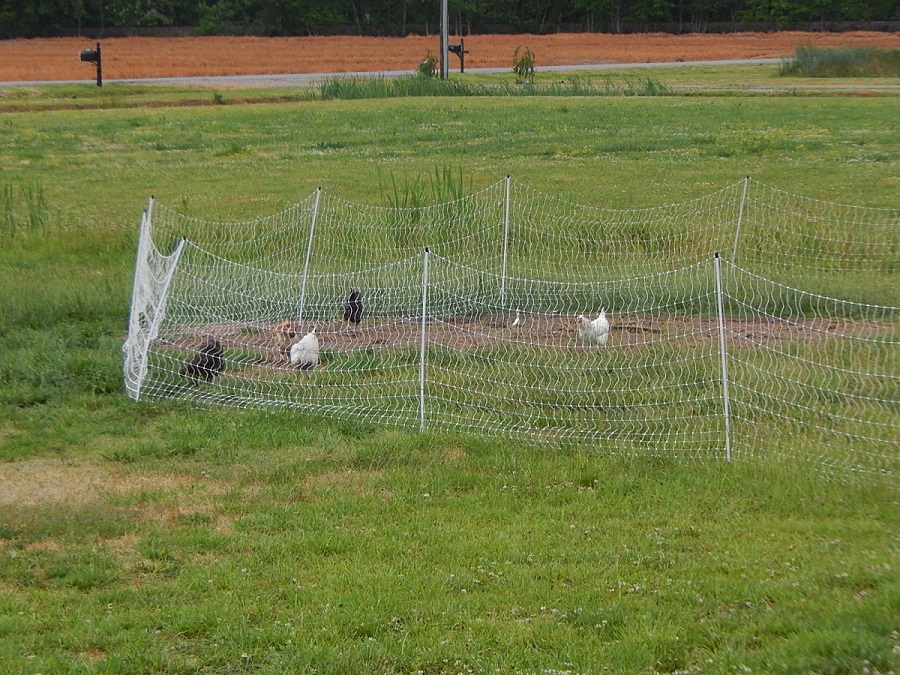The short answer… yes electric poultry netting does work. I have been shocked many times!
Why would you consider an electrified moveable fence? Does the fence protect from predators? Do the birds stay in? Energizer options are confusing? What does a grounding rod do? How do I make the moves?
In this post I will answer these questions from our recent experience using electric poultry netting.
*I have never received products from a company, nor been contacted by any mentioned in this post. This is a completely nonbiased review of items we purchased and have been using.*
Why would you consider an electrified moveable fence?
In our post on backyard poultry we talked about different management models used in our urban homestead. We did have predator attacks and the primary defense was our coop!
Now we have an open 3 acre property with no fencing and birds that do not always go inside our one traditional coop. (Muscovy ducks, geese and turkeys)
The ground is flat but not so flat that a chicken tractor would lay even and keep chickens in or predators out. The uneven ground would also likely make movements by any design other than wheeled difficult.
This is why we chose the Premier 1 electric poultry netting. The double spike model allows us to drive the post into our hard clay (much needed feature here). Movability of the fence is key in keeping the birds on fresh pasture.
Our turkey and meat chicken (broilers) fences are moved weekly, taking only a few minutes to shift the birds and fence. Each previously used area is allowed to recover with the benefit of wonderful poop nutrition!
*Meat chickens get moved within the long run daily, more on that later*
The areas our poultry were moved from have already seen amazing improvement. This picture was from an area our chickens and ducks were moved off of the month before. You can see the difference in grass colors where the fence line was.

Does the fence protect from predators?
I once read that you will never know if a predator protection method is working until a system is removed or disabled and an attack occurs.
2 days!!
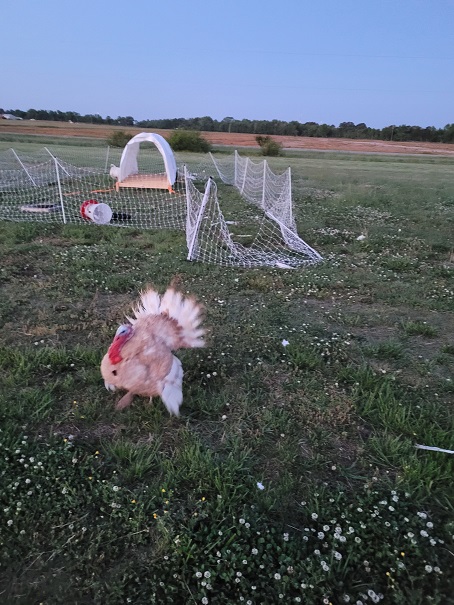
Our fences have been up and energized for half a year. We recently divided the turkeys to their own electric poultry netting run with a moveable turkey wagon shelter. Our Tom was adding some much unwanted stress to the chickens lives.
With our fences further apart and only 1 energizer I did what any person with a bit of electrical knowledge would do…connect them with a wire! (I actually do have some electrical training and background).
Using a single strand aluminum electric fence roll and some electric fence post I jumpered the two fences together. Everything checked out on our electric fence tester and we were now running 3 electric poultry nets, 2 separate enclosure areas on 1 energizer.
Not ideal and the voltage pulsed to the fence was lower but still there. This was a temporary solution till more energizers were purchased.
The simple ways to justify a bad idea
Turkeys are large, all 4 of ours are full grown (3 broad breasted white hens at 30lbs and a heritage tom in the 20s).
We have had no predator attacks and few signs of predators other than hawks during the day. Our geese in the chicken run honk anytime something goes by. There is a tom with the turkey hens.
2 days.
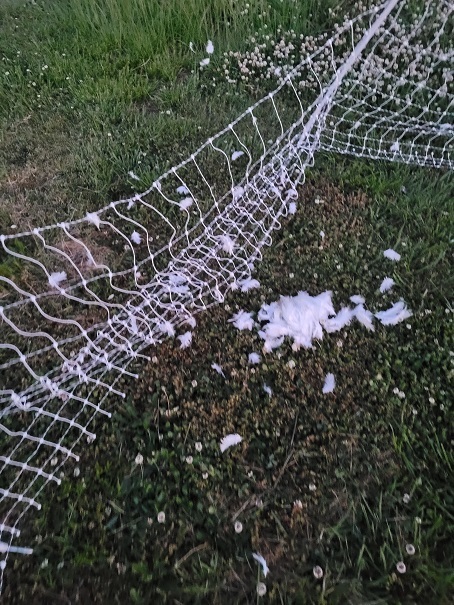
Yes the electric poultry netting works. We woke up to our tom gobbling away, trying to get in with the chickens. The turkey run had fencing down in 2 locations. Feathers spread our all over the yard in two directions. Unfortunately 2 of the 3 hens were killed and partially eaten.
Only 50 feet away the chicken run was untouched. Yes, our 22 chickens were inside the coop with the wonderful automatic door. In the run though, were 2 geese (1 sitting on a nest, and unforunatly the gander would soon be a loss), 7 muscovy ducks, and 2 young turkey poults. (One of our muscovy ducks has adopted the turkey poults and is raising them for us!)
The two remaining turkeys have their own energizer now and have not been bothered since.
Predators from the air
Arial predators are not discouraged from electric fences! Unfortunately we lost our gander to such a case. This was likely from a great horn owl because few other birds would take on a full grown goose and leave it so far away.
During the day our gander was 1 of 2 guard geese that alert the egg flock of hawks or other birds overhead. My wife and I watched a hawk circle and fly away after hearing the geese sounding the alarm.
We do have a rooster that should be doing the same thing…he has thus far failed at his job.

For reduced issues at night we have two systems.
The egg flock run has been reduced in size to free up a net now used by the meat chickens. The remaining area has t-post and tomato cages spread out with bird reflective tape.
Our meat chicken run is narrow and has a garden deer and bird net supported by t-post running the length.
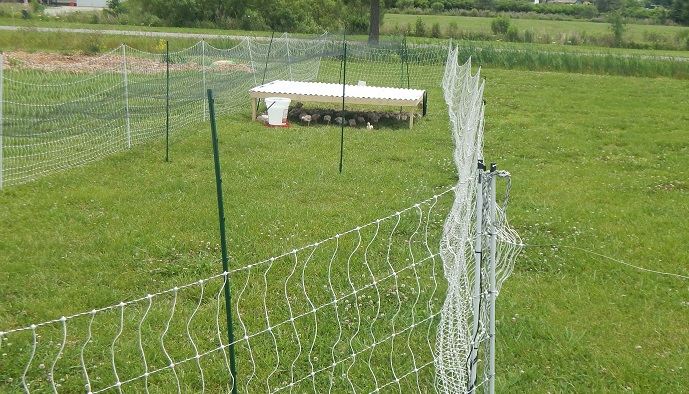
No further attacks have occurred.
You wont know if a system is working until it is removed and an attack occurs. Learn from my laziness and failure to provide protection for our flock.
On to happier questions!
Do the birds stay in?
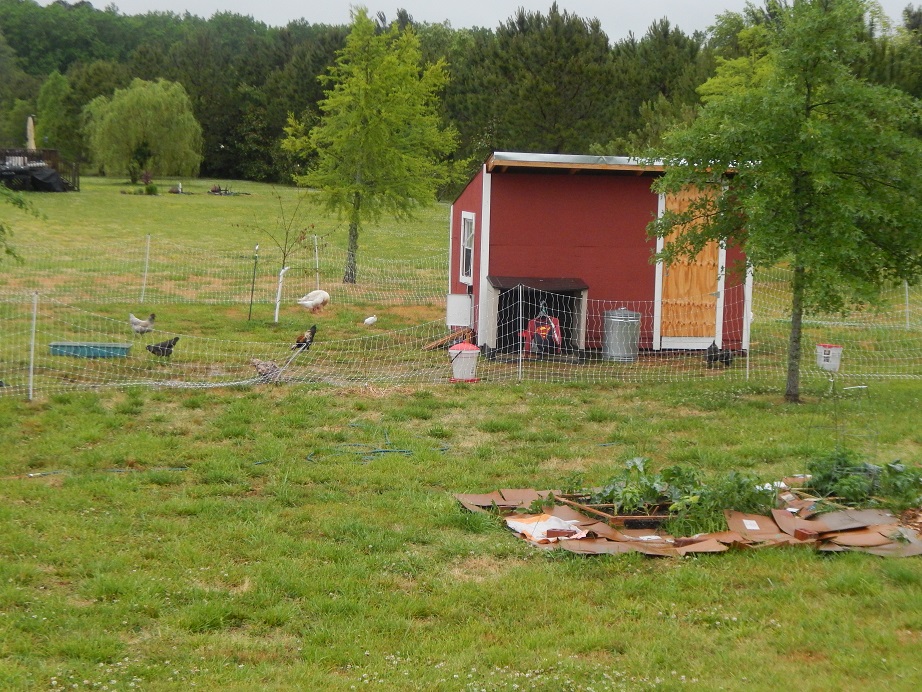
Yes and no.
Our turkeys are in the 42” tall model 100’ run. Mr. Pickels (the tom) has ran through and flown over the fence when startled! Not a common occurrence though.
The egg run and meat run have 48” tall sections each at 164’ long. I have only caught a couple of the full grown girls out. This was when I was delayed in bringing them food.
Recently we aquired some small Coukoo Marans from a friend that are able to slip through the fence openings. Premier 1 has a fence with smaller openings designed for baby chicks, we have not invested in that product yet and therefore will not speak to it.
Muscovy ducks…super good at flying! We wrote a post on why this breed earned a place on our homestead despite this trait. Some wing clipping once or twice a year will keep them mostly in.
Our baby turkey poults are also venturing further out and flying over the fence now. They do not wander far away from their adopted moms (Muscovy duck Wasp, and Mama goose Mantis).
Energizer options are confusing
There are a lot of different energizers out there. We use the solar powered models for ease of use. I periodically test the fence (with a tester now…got tired of using my hand) to verify everything is in working order. There is also a convenient light that flashes when a pulse occurs. This makes for an easy energized check at night!
We currently are using a Gallagher 0.4 Joule S40, an American FarmWorks 5 mile 0.1 Joule, and an American FarmWorks 10 Mile 0.15 Joule charger.
Miles and Joules are the most common ratings. The best recommendation I found was 0.25 Joules per section of fencing… which we do not meet. The miles rating I have disregarded because electric poultry netting is not long wires with minimal contact to the ground like traditional livestock electric fences.
I have found is all these energizers are capable of providing a good kick on the fence.
Price! The Gallagher was much more expensive but also contains a larger battery which should mean it can continue for longer periods in poor weather conditions. American Farm Works had a good sale at our local farm store!


Based on the fence tester, slightly better use of the grounding rod and varying conditions of weather I have found both energizers pulse between 2KV and 5KV. Sometimes one run has a fence dealing with more standing water or higher grass. All deliver enough of a kick I avoid touching them.
*Periodically the fence needs to be adjusted, driving post all the way in the ground and not being tight can cause additional wire contact with the ground reducing the voltage delivered.*
What does the grounding rod do?
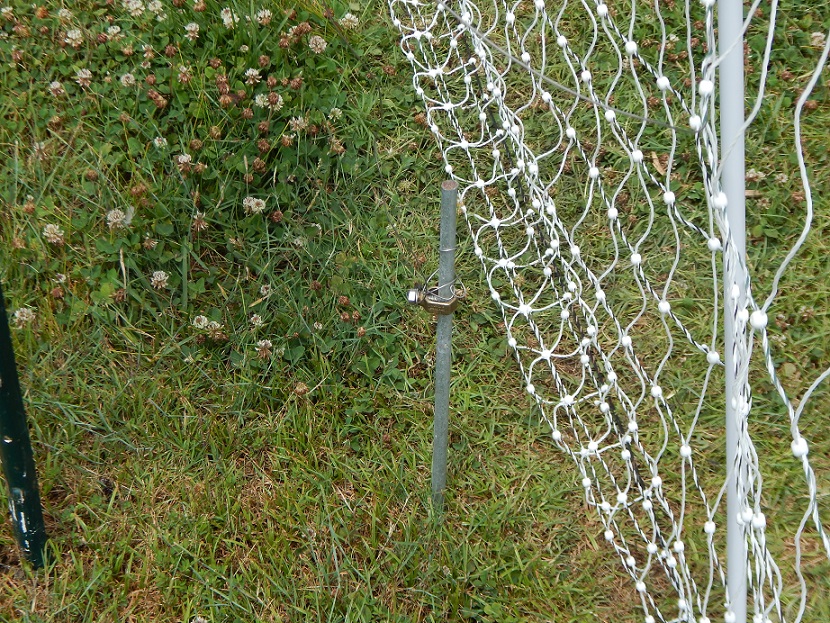
Have you ever tested a 9V battery by licking the two terminals? Maybe you are smarter than me but the thought is you now felt 9V. I do not recommend trying it if you have not!
The value of the voltage felt on the fence line is similar in concept. Though predators are not going to touch the fence and the grounding rod at the same time and get the full effect of voltage being pulsed to the line!
A grounding rod sets the value on one side of the pulse as close to 0V as possible to maximize the value on the fence line.
Issues in a constantly moving system… the grounding rod has to be moved too. Though an anchored 3 pole system would be great for a permeant fence, it is not practical for a moving system.
We bought a 3 pole set on amazon of 3′ sections then used 1 pole per energizer. Remember that hard soil? Here a problem arose.
Poor grounding! Our fence is normally hitting 3KV… and so is the grounding rod! With better grounding our fence could be at a good 5KV.
Premier 1 sells the Intellishock energizers that seem to have large batteries and a grounding system that can attach to the casing. This would make moving great though they were out of stock so I can not speak to how well they work.
How do I make a move?
This has admittedly taken a few youtube videos and some good old fashion experiance.
The 100′ fence is much more manageable for 1 person than the 164′ fence.
Food! I moved the food and water to where the birds will be next. They mostly stayed there during the fence positioning.
Strategic planning. The FarmWorks energizers can be mounted on a T-Post. By mounting the energizer and a good grounding rod system in 1 planned spot the fence can be rotated around that single point 4 to 6 times depending on size and shape.
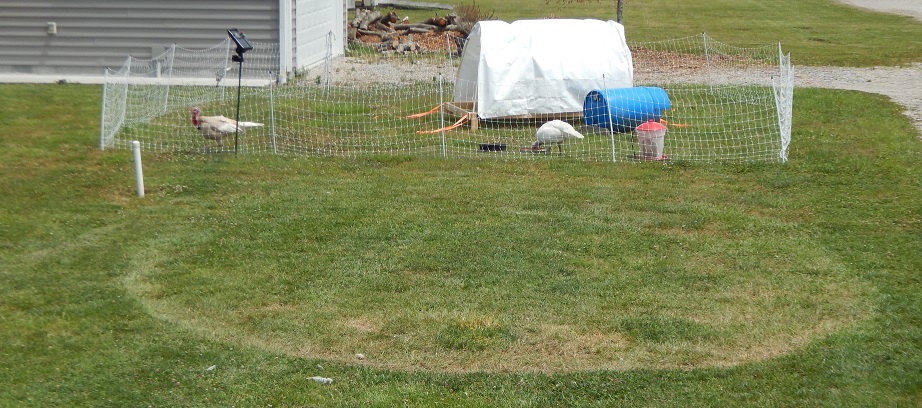
Our turkeys are on a 4 plot rotation in a square. The broilers are doing a 6 plot rotation with a single move of the grounding and energizer during the pasture raised stage. A total of 9 spots used during their time outside.
The meat run is a single fence post width wide (10′ for our model) with the 8′ mobile roof shelter based on Justin Rhodes’ shaw model. He has a lot of great instructional videos on YouTube (Abundant Permaculture). All I do is roll the roof forward once a day.
What we like
These fences work!
The fences are moveable.
Our poultry mostly stay within the fences.
Ground predators stay out!
The double spike model can be driven with your foot into the dry ground.
What we don’t like
The fences and energizers are an investment and costly.
The spikes can bend…thank you hard clay. (This only results in the post at weird angles which are designed to bend, no issue in functionality)
Conclusion
We will keep using the electric poultry netting system on our homestead. I am even considering other models for different types of animals (4 legged variety since we need more poop to help the land).
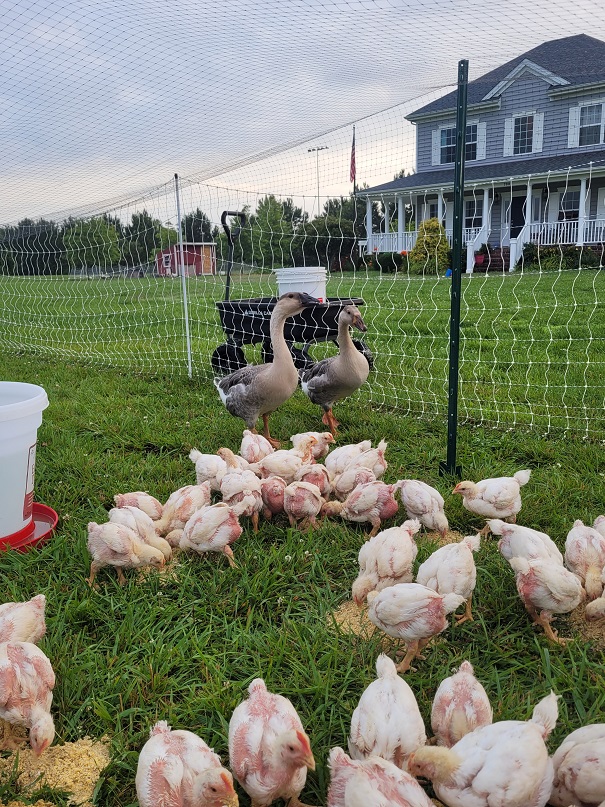
There are many options for keeping your flock safe. Be sure to check out our other post on backyard free range for more ideas that may assist in your unique situation!
